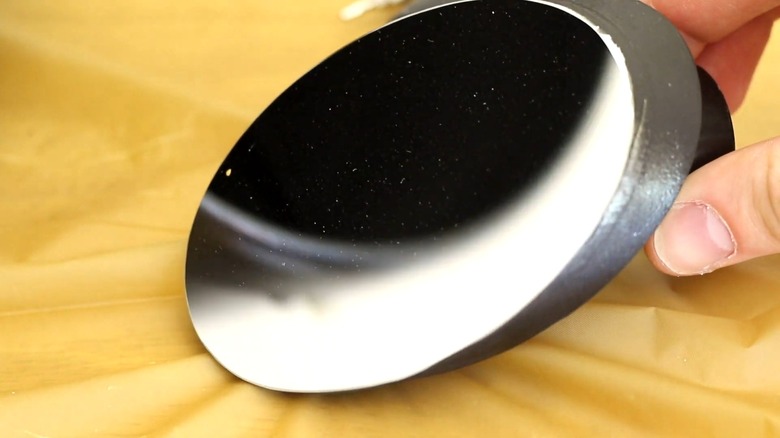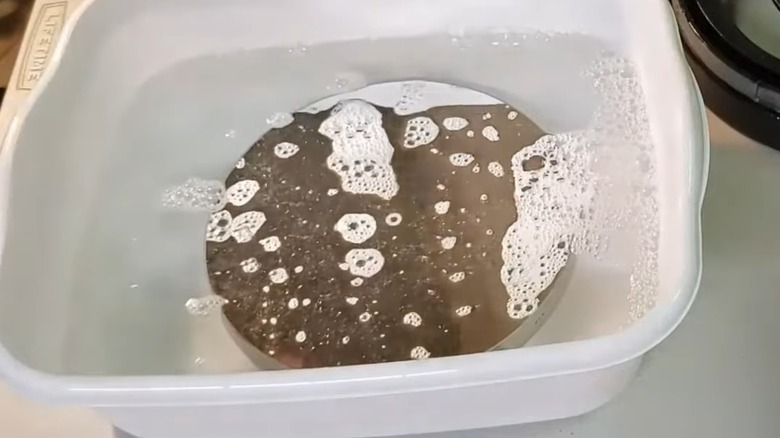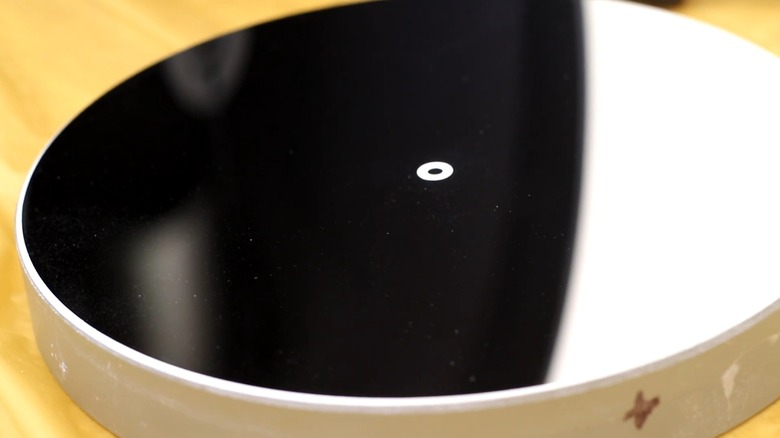How To Clean A Telescope Mirror The Right Way
Through the centuries, the telescope has gone through an incredible evolution to become the tool it is today. In the modern era, these miraculous inventions can be purchased from a variety of stores, making it easier than ever for folks to admire the cosmos from the Earth's surface. But there's a little bit of maintenance required to keep a telescope at its best, allowing users the best sight possible of the planet's sky and beyond.
The biggest component of telescope care is storage, as it's best to keep them in dry, climate-controlled areas. A telescope cap and cover are also wise investments to further protect it from the elements. Despite all of this, though, telescope mirrors — the pieces that collect light and produce a close-up, clear image of the distant sky — can accumulate dust and debris, requiring cleaning. And there are proper ways to clean mirrors, prolonging their life and continuing to produce clear, fascinating images.
The regular mirror cleaning process isn't too involved
Before taking your telescope apart to pull the mirror, or mirrors, out, it's worth asking, do you really need to clean them? This is really only something to be done if your mirrors are so dirty that they're obstructing your view. If this is the case, it shouldn't take much to have them in pristine shape once again. All you need to gather are a working sink, liquid detergent, a couple of clean, dry microfiber towels — dollar store finds that could also save you money when working on your car — and distilled or demineralized water.
1. Clean your sink's interior so no debris ends up on the mirror once its placed within. Ensure the drain is left open.
2. Set down a dry towel in the sink and place the mirror face-up on top of it.
3. Rinse the mirror with room-temperature water until it's clear of dirt and dust.
4. Turn off the sink and douse the mirror in the water.
5. Stand the mirror on edge on the towel and let it air-dry. Repeat the process with the next dirty mirror, if there is one, or if you missed a spot or two.
Most often, this process is enough to have telescope mirrors in great shape, but there is a slightly heavier-duty cleaning process you can try for more stubborn cases.
Cleaning dirtier telescope mirrors is more time-consuming
Whether your mirror is covered in stubborn debris or you simply want to be thorough, there's a second method to try. Instead of water doing the bulk of the work, your hands will, with the aid of a clean sink, a clean container, two clean microfiber cloths, dish soap, and distilled water.
1. Remove jewelry and thoroughly wash your hands with soap, rendering them as free of grit as possible.
2. Place the clean container in the sink and set the cleaning cloth within it. Fill it with warm water and a drop of dish soap, not enough to create excessive bubbles.
3. Rinse the mirror under a warm stream of water and gently place it in the container, atop the towel.
4. Slowly swish the mirror around with your hands, giving the soap and water a chance to clean it.
5. Remove the mirror and set it off to the side on the dry towel.
6. Empty the container and refresh the soap and water. Submerge the mirror again.
7. Gently use your fingertips to wipe away stuck-on debris.
8. When the mirror is clean, remove it from the container and rinse it again before dousing it in distilled water.
9. Stand the mirror on edge, resting on the dry towel to air-dry. To speed up this process, you can use a hair dryer to push water droplets off.
This method should have your telescope mirror looking stellar.
Things to keep in mind when cleaning a telescope mirror
As long as you take your time and use the right stuff, you'll be back to clear stargazing in no time. But both of these cleaning methods leave room for error if you go about them the wrong way.
Telescope mirrors are sensitive and prone to damage if the proper care isn't taken when cleaning them. It's incredibly important to avoid rubbing them, with your hands or any other surface. If dust or grit is pressed into a mirror, scratches and scuffs are all but guaranteed. That's why we recommend washing your hands thoroughly and wiping gently with your fingers, as well as using microfiber cloths rather than harsh paper towels.
Some use cotton balls instead of their hands for the second method, though this is risky. You have to use multiple cotton balls, as once dust has moved to the cotton, using it again risks returning that dust to the mirror and scratching it.
The final distilled-water rinse is also crucial. If you let a mirror dry after running it under the tap, air-drying will probably result in water spots, so you'll end up back at square one. So long as you used distilled water or a similar product before air-drying, you can expect a flawless reflection. And if you happen to have some left over, it can be used to help make your own windshield wiper fluid, too.



